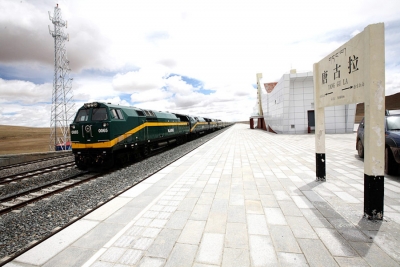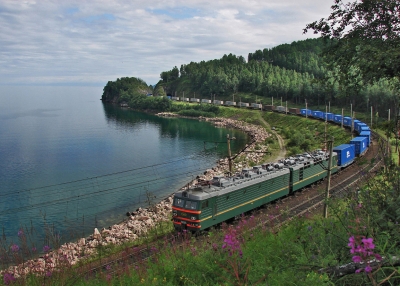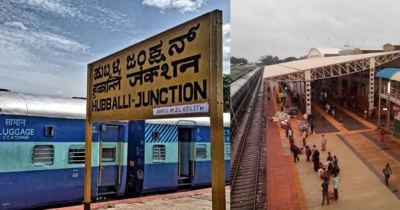Why is the Tanggula railway station unique?

Located on the Tibetan Plateau, the Tanggula railway station is one of the loneliest railway stations in the world. It is part of the Qingzang Railway, but is an unstaffed railway station located at 5068 metres above sea level, making it the highest railway station in the world. This station is 1.25 kilometres long and covers 77,002 square metres with 3 rail tracks.
Along with the Golmud to Lhasa section of the Qingzang Railway, the Tanggula railway station was also inaugurated on July 1, 2006. The trains stop here very briefly, and most often, passengers just remain on the train. Tanggula usually serves as a stop-off for repairs or emergencies, but the view from the station (or from the train as it stops or passes by) is very impressive. The region near the railway station is mostly uninhabited, and very few passengers get off at this station. A few kilometres from this station is the Tanggula Pass, which is 5071.9 metres above sea level, making it the highest point of the Qingzang Railway.
The Qingzang Railway was rewarded with a handful of world records. It was recognized as being the highest railway in the world, with the world’s highest railway tunnel (the Fenghuoshan Tunnel) and the world’s highest railway station.
Picture Credit :Google

 Shree Siddharoodha Swamiji Hubballi Junction, also known as SSS Hubballi Junction, of Karnataka is the longest railway platform. The platform number 1 of Hubballi Junction has a length of 1,505 metres, thus becoming the longest railway platform of the world as of March 2021. The earlier record of being the longest platform was held by the Gorakhpur Railway Station (1366 metres), but with the extension of the Hubballi railway station to include a new platform, it holds that position now.
Shree Siddharoodha Swamiji Hubballi Junction, also known as SSS Hubballi Junction, of Karnataka is the longest railway platform. The platform number 1 of Hubballi Junction has a length of 1,505 metres, thus becoming the longest railway platform of the world as of March 2021. The earlier record of being the longest platform was held by the Gorakhpur Railway Station (1366 metres), but with the extension of the Hubballi railway station to include a new platform, it holds that position now.